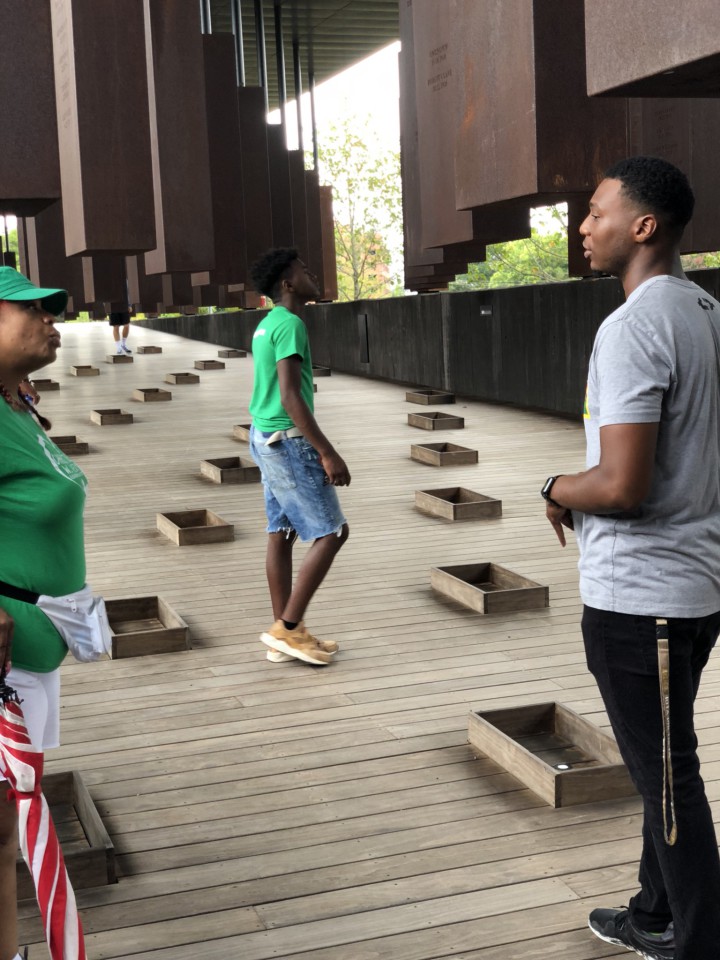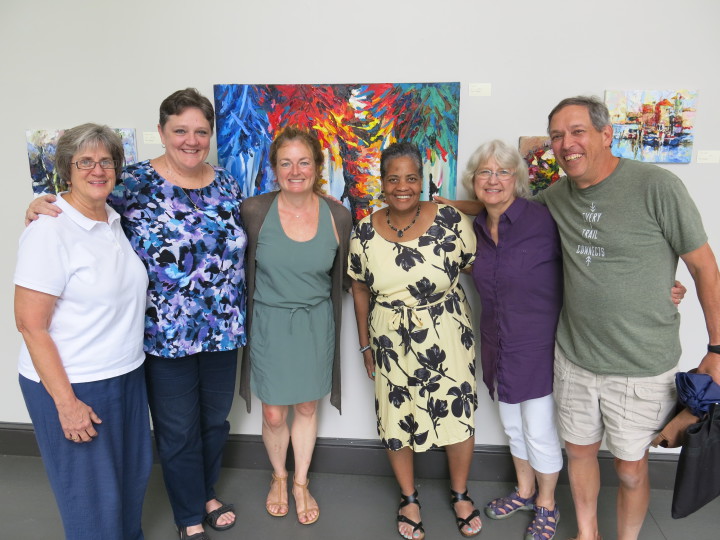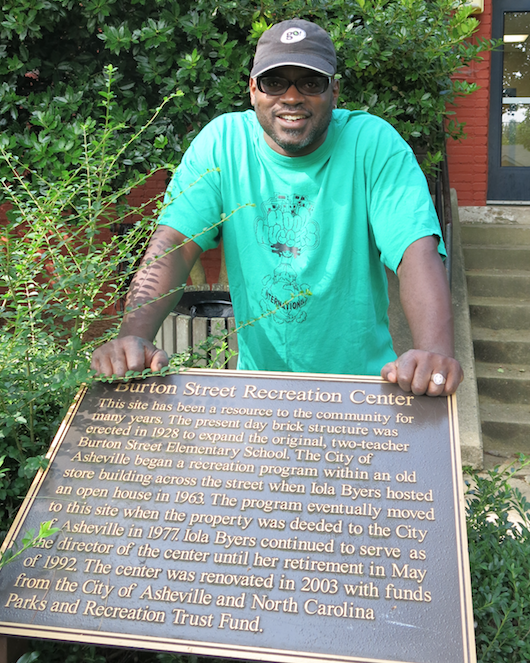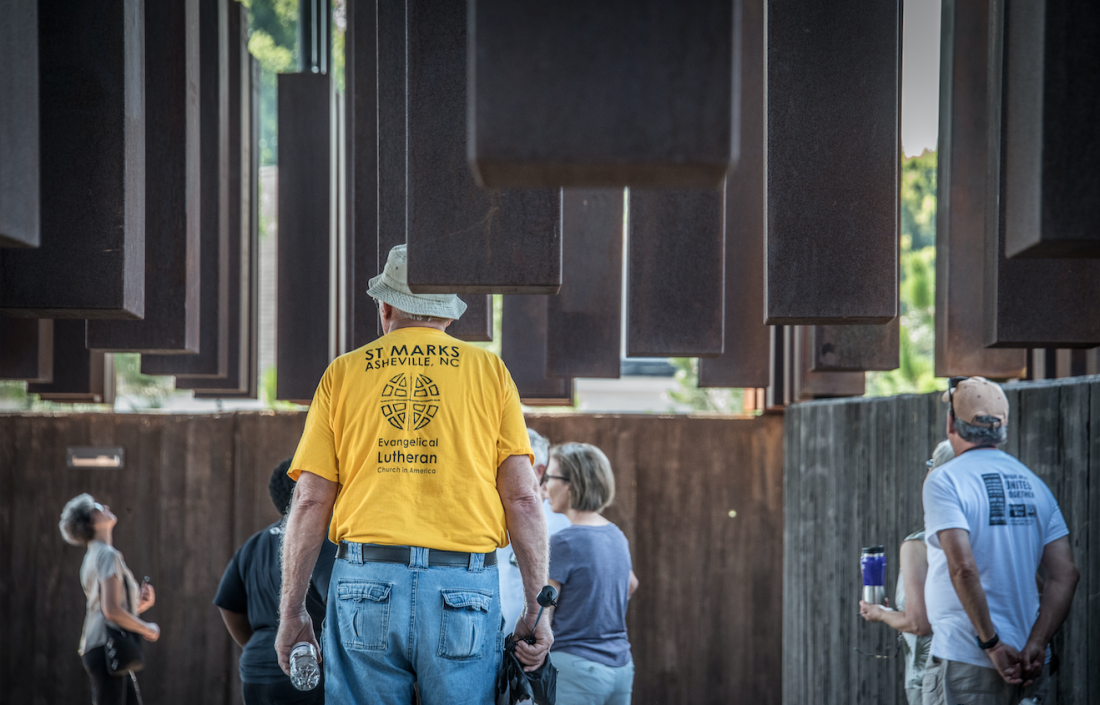Some victims were burned alive. Others were hanged from tree branches, telephone poles or bridges. Bullet holes and knife wounds riddled the bodies of many. Still others met their deaths via beating or drowning.
In some cases, thousands of spectators came to witness these lynchings. Picnic blankets were spread. Pictures were taken. Postcards of the lifeless bodies were mailed to relatives and friends. Some spectators collected cuttings from the rope or tree limbs from which the cadaver hung as souvenirs; others sliced a finger or an ear from the corpse.
Between 1877 and 1950, more than 4,400 African-Americans were murdered in such fashion, according to an estimate by the Equal Justice Initiative. To arrive at that figure, the Montgomery, Ala.-based nonprofit scoured newspapers, court records and other historical documents; in addition, the group interviewed local historians, survivors and victims’ descendants.
Most of the victims were adult males, but women and children also numbered among the dead. Some had been accused of murder or rape, while others lost their lives for using profane language or insulting a white person. Trials were never held for the accused, and those responsible for the lynchings rarely faced criminal charges.
Only recently have a majority of these victims — including three from Buncombe County — been formally recognized. On April 26, the Equal Justice Initiative opened the National Memorial for Peace and Justice in Montgomery. The 6-acre site houses more than 800 monuments the organization has created, each indicating a county where racial terror lynchings occurred. Fifty-five of North Carolina’s 100 counties are represented, including seven in the westernmost portion of the state: Avery, Buncombe, Haywood, Macon, Polk, Rutherford and Watauga. Founded in 1989, the Equal Justice Initiative conducts research, does educational outreach and provides legal representation to inmates who have been illegally convicted or unfairly sentenced.
In its first three months, the memorial hosted nearly 100,000 visitors, notes Jonathan Kubakundimana, a program assistant at the nonprofit. Students and scholars from Asheville, as well as representatives of several religious organizations here, are among those who have made the trip.
Meanwhile, the nonprofit has also created replicas of the monuments, which it will make available to all the counties in question beginning next year. Many of the Ashevilleans who have visited the memorial maintain that claiming Buncombe’s monument would be a significant step toward addressing our region’s part in this country’s history of racial violence while also serving as an educational tool for confronting present-day injustices with ties to the Jim Crow South.
A different conversation
On Aug. 1, a contingent from the Christine W. Avery Learning Center, an Asheville-based educational nonprofit, arrived in Montgomery. Besides visiting the memorial, the 21 students and 10 adults explored the Equal Justice Initiative’s nearby sister facility, The Legacy Museum. Subtitled “From Enslavement to Mass Incarceration,” it occupies the former site of a warehouse for slaves. The group also toured Troy University’s Rosa Parks Museum, which stands at the place where she was arrested. Parks’ refusal to surrender her seat on a public bus to a white person triggered the 1955-56 Montgomery bus boycott, a landmark civil rights era protest.
Learning Center co-founder Terrell Morton says the visits constituted “an eye-opening moment” and a “revelatory experience” for the students in a number of ways. Some lynching victims, they found, were only 7 or 8 years of age. A few students even recognized their own last names among the murdered. And all of them said they understood the significance of the Buncombe County monument.

“It made the experience a lot more meaningful for them, because they were drawing connections to their name, to the place, to the ages of the people, to the stories,” says Morton.
For 15-year-old Lanaysia Hollibur, the visit was nothing short of shocking. “It was not what I pictured in my head,” she explains. “I was hurt knowing that my ancestors had to go through that to get me to where I am today.”
Anticipating such reactions, Morton, a postdoctoral fellow at the University of Missouri who serves on the Learning Center’s board, had enlisted fellow academics with related backgrounds to accompany the group. Those chaperones, he notes, helped students “unpack their experience, as well as begin to talk about what those experiences meant to them and how it helped shape how they understand their racial or their gender or their American identity.”
Hollibur’s 14-year-old cousin, Kayla Burrell, who also traveled to Montgomery, feels it’s important for Buncombe County to claim its replica monument. “I think they should do it to give people information that they may not know,” says Burrell, “to show others that this is what our ancestors had to go through.”
Morton agrees. The replica, he believes, would be a powerful tool to educate the community about a period in American history that’s often ignored. “When you talk about brutality like lynching and name lynching as murder — and you show the horrors of that murder, in terms of there being no age boundary for people that were lynched and [the fact that] there were actual parties that took place around lynchings — it creates a different conversation,” he says.
Unpacking the history
In her 2009 book, Lynching and Spectacle: Witnessing Racial Violence in America, 1890-1940, Amy Louise Wood acknowledges that not all lynchings occurred in the South and not all the victims were African-American men. Nevertheless, notes the author, a history professor at Illinois State University, “The vast majority of lynchings at the turn of the century took place in former slave states, and the overwhelming majority of those were perpetrated against black men. Even more important here, most Americans at the turn of the century understood lynching as a Southern practice and as a form of racial violence that white mobs committed against African-American men.”
The South, the author continues, “was widely considered to be, as H.L. Mencken deemed it, ‘the lynching belt,’ a reputation that many white Southerners eventually struggled to disavow.”
 In part, Wood attributes the violence to an overwhelming fear of a dramatically changing social landscape around the turn of the last century. New industries, such as logging and turpentine, were popping up, and commercial markets were expanding.
In part, Wood attributes the violence to an overwhelming fear of a dramatically changing social landscape around the turn of the last century. New industries, such as logging and turpentine, were popping up, and commercial markets were expanding.
This new social order, writes Wood, “most threatened white dominance, as urban space and establishments brought whites and blacks together in new kinds of interactions and exchanges, and as many African-Americans came to expect the same legal and civil rights accorded to whites.”
To combat change, Jim Crow laws were passed across the South. A recently released report by the Equal Justice Initiative titled “Lynching in America: Confronting the Legacy of Racial Terror” states that between 1885 and 1908, “All 11 former Confederate states rewrote their constitutions to include provisions restricting voting rights with poll taxes, literacy tests and felon disenfranchisement.”
The report goes on to note, “The ratio of black lynching victims to white lynching victims was 4 to 1 from 1882 to 1889, increased to more than 6 to 1 between 1890 and 1900, and soared to more than 17 to 1 after 1900.”
And though lynchings were less common outside the region, the report also points out that Northerners contributed to the dehumanization of African-Americans through academic studies and theories that claimed “black men were dangerous subhumans predisposed to rape.”
In response to this ingrained fear and sense of social vulnerability, whites lashed out. Lynching spectacles, writes Wood, “generated and even coerced a sense of racial superiority and unity among white Southerners across class, generational and geographic divisions. The rituals of lynching themselves, in their torturous dehumanization of black men, enacted and embodied the core beliefs of white supremacist ideology, creating public displays of bestial black men in visible contrast to strong and commanding white men.”
On Jan. 26, 1922, the U.S. House of Representatives passed the Dyer anti-lynching bill. By December, however, Southern Democrats in the Senate had successfully filibustered the bill. The following year, notes Darin Waters, an associate professor of history at UNC Asheville, the first National Flag Conference was held in Washington, D.C. Even as the Senate was failing to pass legislation to protect the lives of African-Americans, this conference, Waters points out, “was adopting guidelines about how the American flag was supposed to be treated, as if it was this living, breathing thing.”
Despite the bill’s failure, however, anti-lynching committees continued to form. The National Association for the Advancement of Colored People, founded in 1910, led the way with its ongoing campaign. Such activism played a major role in shifting public perception of these heinous acts.
Meanwhile, the Great Migration, roughly spanning the years 1916-70, saw nearly 6 million black Americans leave the South in search of work and better living conditions. This huge shift also had an impact on lynching: As the African-American population declined in the South, so did the number of lynchings. “In 1952, for the first time since the Tuskegee Institute began tabulating records in 1882, a full year passed with no recorded lynchings in the United States,” the report notes.
But as lynchings dwindled, capital punishment soared. “As African-Americans fell to just 22 percent of the South’s population between 1910 and 1950, they constituted 75 percent of those executed in the South during that period,” the report goes on to state. And today, “African-Americans make up less than 13 percent of the nation’s population, but nearly 42 percent of those currently on death row in America are black, and 34 percent of those executed since 1976 have been black.”
White privilege
In July, 39 members of six local religious organizations — First Congregational United Church of Christ, St. Mark’s Lutheran Church, the Baha’is of Asheville and Western North Carolina, Carolina Jews for Justice, Congregation Beth HaTephila and Jubilee! Community — caravaned to Montgomery. And like the Learning Center students, these people grappled with the disturbing information presented at the memorial and museum.
Ron Katz of Jubilee and Carolina Jews for Justice says the journey was part of a concerted effort by these organizations to confront racism, both as it existed in the past and as it continues to exist. A key component, he notes, is white community members’ willingness to simply listen. “Sometimes you hear this term ‘white savior mentality,’ where we think we know how to save communities,” he explains. “The key for us is not to be looking at saving anything. Our role is to be a participant.”
For others in the group, the visit sparked conversations about white privilege. “In my own journey, I recognize that the privilege of white privilege is not having to think about my race,” says the Rev. Kim Buchanan of First Congregational. “That’s what the privilege is.”

Barbara Bassler of St. Mark’s Lutheran believes that one of the major hurdles in addressing white privilege within the white community is a sense that by acknowledging this inherent advantage, it somehow denigrates individual accomplishments. But white privilege, she maintains, “doesn’t mean you didn’t play hard on the field: You just have to understand who built the field for you.”
Since returning from their trip, group members have expressed an interest in finding Buncombe’s replica monument a permanent home here. But they’re emphatic that they want to work in partnership with members of Asheville’s African-American community, rather than taking the lead. “We need to combine our resources,” says Yolanda Adams, First Congregational’s ministry coordinator. “We need to help each other.”
Making it work
Before communities in WNC and elsewhere can claim their monuments, however, the Equal Justice Initiative needs to work out some logistical and procedural issues. Kubakundimana, the nonprofit’s program assistant, says guidelines are still being developed, along with the methods and costs of transporting the 6-foot-tall steel slabs. Currently, he explains, “We’re gathering information and encouraging communities to build coalitions. We want this to be something that … the whole community can be a part of.”
Still, Kubakundimana expects the pieces to be available to interested communities by early next year. And once placed in counties nationwide, he hopes the replicas will shed light on current issues as well as on the past. “We really do believe that this history we’re talking about is something that’s connected to who and where we are today,” he explains. “And the issues in our nation around racial bias and poverty, we think, can’t be fully understood outside of the context of our history of racial and economic injustice.”
The organization also believes that the impact will be cumulative. “Over time,” the website states, “the national memorial will serve as a report on which parts of the country have confronted the truth of this terror and which have not.”
Painful questions
Sasha Mitchell, chair of the joint city/county African-American Heritage Commission, thinks every county should recognize and claim its monument. But she worries that the nation’s long-standing tradition of ignoring its past might influence how these replicas are received.

“There is an awful disconnect between the reality of race in America and the education that people get about it,” she maintains. In both the white and black communities, she expects, some people will ask, “‘Why do we have to talk about that?’ … I know it’s uncomfortable, but it’s something that has to be looked at.”
Such objections, argues Morton from the Learning Center, miss the larger and more powerful narrative. “Just as much as the lynching memorial and museum are about the grotesque horrors of lynching, they also speak to the determination, the persistence and the capabilities of the black people who lived during that time, who were able to survive during that time and even thrive beyond that time.”
But even in the black community, not everyone is equally supportive of the project. Asheville entrepreneur DeWayne Barton, who also serves on the African-American Heritage Commission, worries that a singular focus on the monument could overshadow the commission’s long-standing goal of placing historical markers in the East End, Shiloh and Burton Street neighborhoods. Once that’s been accomplished, says Barton, all interested parties should come together in a collaborative effort to bring Buncombe’s replica home.
And however the project unfolds, the end result cannot be simply a pat on the back, says local poet Robert “Zack” Zachary, who created the Dialogue Cafe at Firestorm Cafe & Books. “One of the psychoses of America is that we are pushed to forgive and forget,” he maintains, adding that the replica should be seen as an ongoing conversation piece that helps guide the community to a better overall understanding. In his view, it’s not about guilt and it’s not about horror: It’s about raising questions and finding solutions. “What can we do?” he says. “That is the good question.”
Core values

Waters, the UNCA professor, also made the trip to Montgomery in June. After walking the perimeter of the area where the monuments are displayed, he gradually descended, guided by the site’s layout, until he finally stood beneath them, looking up.
Like many others who spoke with Xpress, Waters considers the memorial a well-designed, thought-provoking and important contribution to a period of our nation’s past that, for too long, has been swept under the rug. At its core, Waters believes the memorial and its monuments raise fundamental questions about how we, as a country, view human existence.
“I think life is sacred,” he explains. “People’s lives have value. But we have to ask ourselves, do we really believe that? If we do, then not only must we ask what did those individuals who were lynched lose in the process, but what parts of ourselves did we lose. And we did lose something, because the people who participated in that particular moment in time were losing a part of their humanity — and that, by default, has been handed down in the way that we actually value human life itself.
“I think it’s basically the argument that Martin Luther King Jr. tried to make in his ‘Letter From a Birmingham Jail,’” continues Waters. “We are the inheritors of the experience. And we are: There’s no escaping that. … The question becomes what do we do with this inheritance? Are we willing to have a serious and hard conversation, which I believe this memorial asks us to do? … If so, I think something beneficial and constructive can come out of it.”






Before you comment
The comments section is here to provide a platform for civil dialogue on the issues we face together as a local community. Xpress is committed to offering this platform for all voices, but when the tone of the discussion gets nasty or strays off topic, we believe many people choose not to participate. Xpress editors are determined to moderate comments to ensure a constructive interchange is maintained. All comments judged not to be in keeping with the spirit of civil discourse will be removed and repeat violators will be banned. See here for our terms of service. Thank you for being part of this effort to promote respectful discussion.